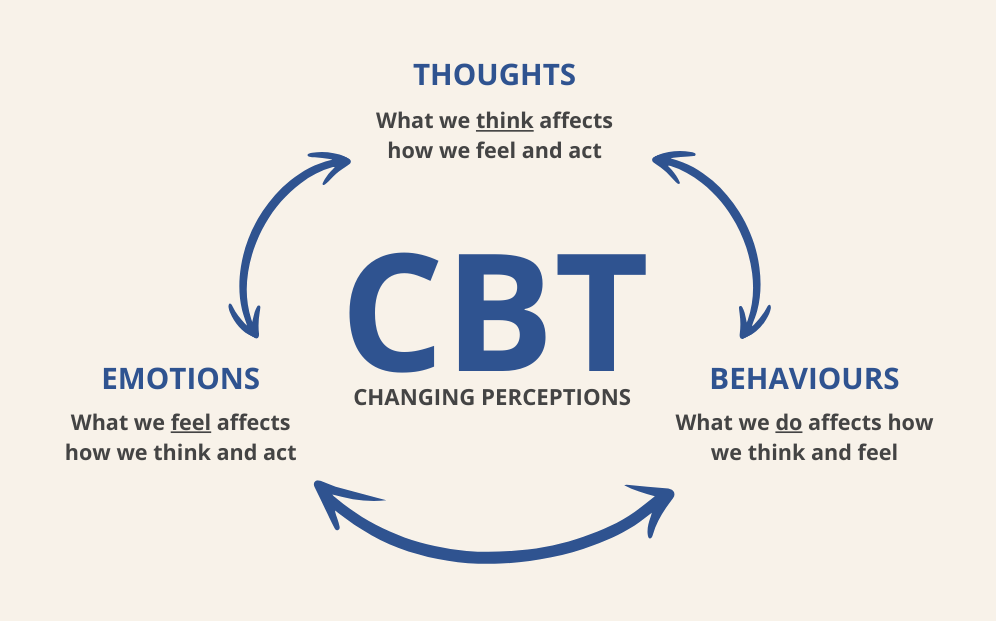“We cannot solve our problems with the same thinking we used when we created them.”
― Albert Einstein
Cognitive Behavioural Therapy (CBT) is a type of psychotherapy that focuses on the connection between thoughts, feelings, and behaviours. It is based on the idea that our thoughts influence our emotions, and our emotions influence our behaviors. Therefore, by changing negative or unhelpful thought patterns, individuals can improve their emotional responses and behaviours.
CBT is a collaborative, skills-based model. It aims at teaching the client the necessary skills for identifying and modifying their maladaptive thoughts and beliefs. The client is actively engaged with the counsellor, working towards an agreed end or goal. CBT works by equipping individuals with practical tools and techniques to shift thinking and behaviors, leading to improved emotional regulation and overall well-being.
CBT includes several key processes that aim to help individuals identify and change negative thought patterns and behaviors.

Some of the main processes in CBT are:
1. Cognitive Restructuring: Identifying and challenging negative or distorted thoughts (e.g., “I always fail”) and replacing them with more balanced and realistic thinking.
2. Behavioral Activation: Encouraging individuals to engage in activities that are rewarding or pleasurable, which helps combat depression or avoidance behaviors.
3. Mindfulness and Self-Awareness: Increasing awareness of thoughts, feelings, and physical sensations in the present moment, often helping people manage stress or anxiety more effectively.
4. Problem-Solving: Teaching skills to break down complex problems into manageable steps and develop practical solutions.
5. Exposure Therapy: Gradually confronting feared situations in a controlled way to reduce anxiety over time, especially for conditions like phobias or PTSD.
6. Thought Record Keeping: Writing down and analyzing thoughts and feelings, often with the help of worksheets, to recognize patterns of thinking and the impact on emotions and behavior.
7. Graded Exposure: Using a step-by-step approach to gradually face fears or anxieties in small, manageable doses.
8. Behavioral Experiments: Testing out the validity of negative thoughts by experimenting with new behaviors and observing the outcomes to challenge misconceptions.
9. Activity Scheduling: Planning pleasant or goal-directed activities to improve mood and increase motivation.
CBT works by equipping individuals with practical tools and techniques to shift thinking and behaviors, leading to improved emotional regulation and overall well-being.
